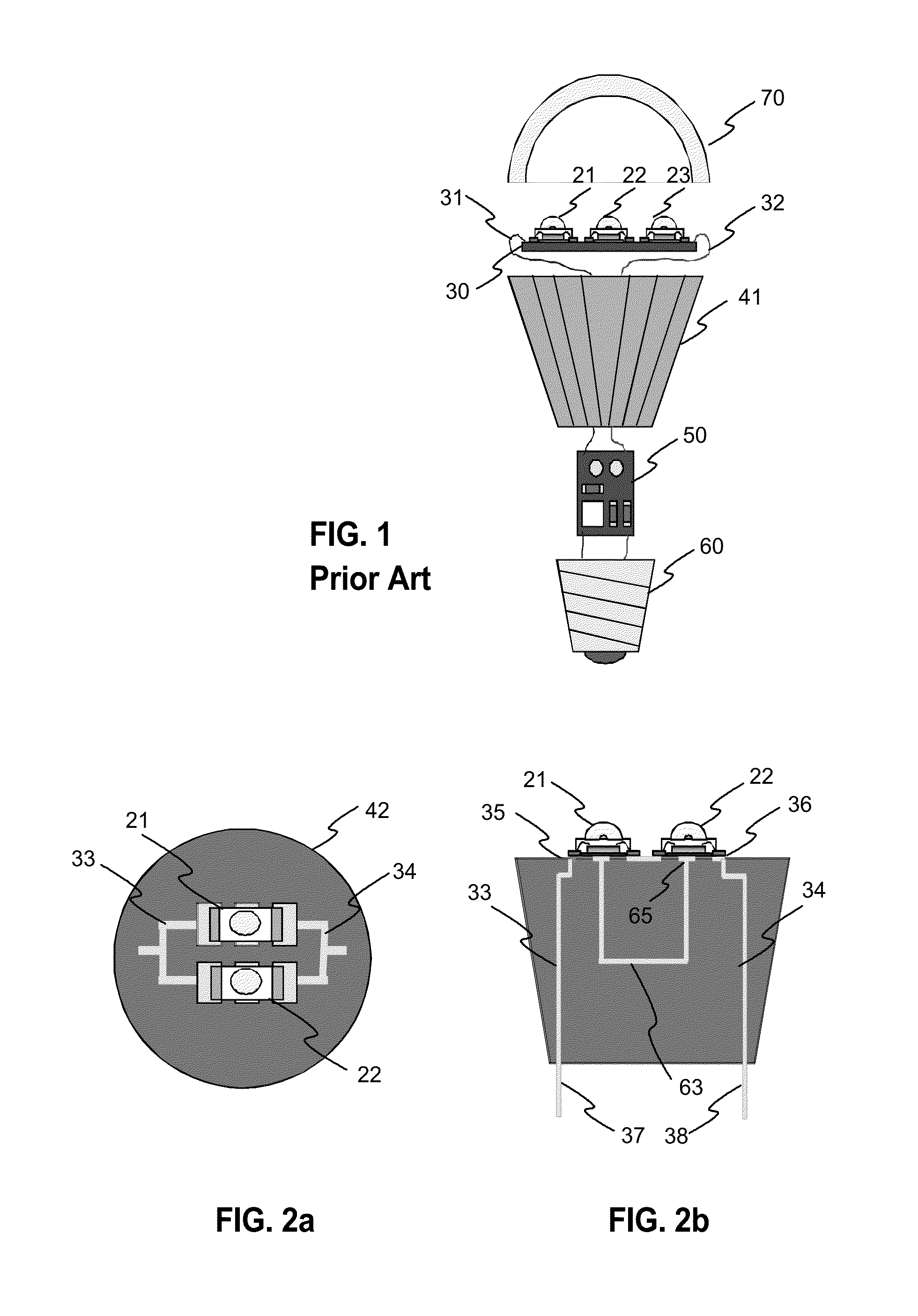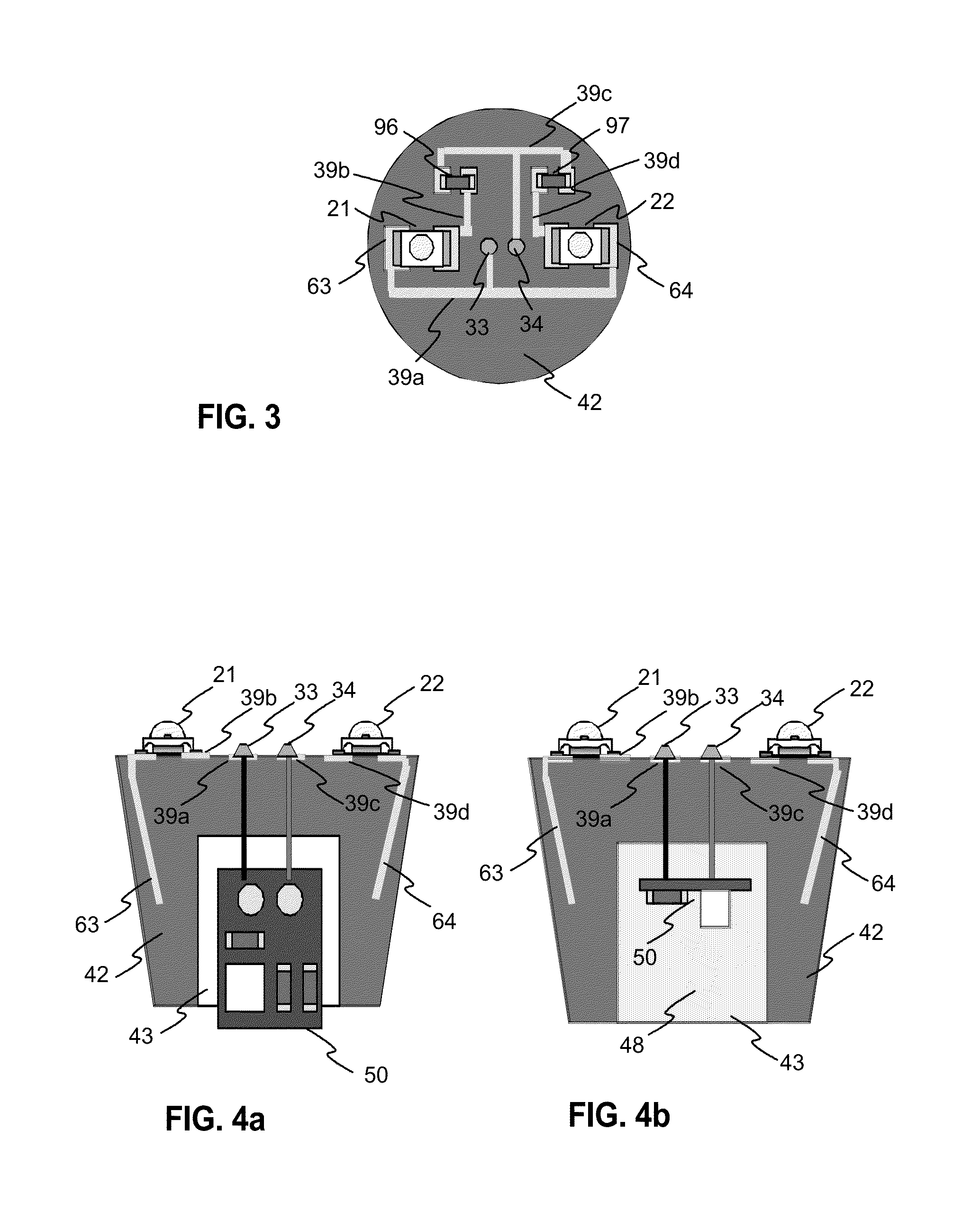Heat sink assembly for opto-electronic components and a method for producing the same
a technology of opto-electronic components and heat sinks, which is applied in the direction of lighting and heating apparatus, lighting and heating arrangements, electrical equipment, etc., can solve the problems of inability to use opto-electronic components such as leds with a maximum or even high power, and increase the use of leds instead of incandescent light bulbs, so as to achieve efficient conductivity to the luminaire structure, increase the ventilated surface area, and high thermal connection efficiency
- Summary
- Abstract
- Description
- Claims
- Application Information
AI Technical Summary
Benefits of technology
Problems solved by technology
Method used
Image
Examples
Embodiment Construction
[0085]FIG. 1 was described in the prior art description above.
[0086]FIG. 2a illustrates top view of an exemplary heat sink assembly according to the invention. FIG. 2b illustrates a cross section view of a similar exemplary heat sink assembly according to the invention. The assembly has an injection moulded heat sink 42 with a planar surface at the top. The heat sink has embedded electrical inserts 33 and 34 and embedded thermally active insert 63, which have first exposed areas 35, 36 and 65 respectively at the top surface of the heat sink. There are two LEDs 21 and 22, which are electrically connected to the exposed areas of the inserts. The electrical contacts are connected to areas 35 and 36. However, the thermally active insert area 65 can also work as an electrical contact. At the opposite surface of the heat sink, the inserts have second exposed areas 37, 38, for the connection to a power supply PCB, for example. If the thermally active insert 63 is electrically active then i...
PUM
| Property | Measurement | Unit |
|---|---|---|
| power | aaaaa | aaaaa |
| power | aaaaa | aaaaa |
| emissivity | aaaaa | aaaaa |
Abstract
Description
Claims
Application Information
 Login to View More
Login to View More - R&D
- Intellectual Property
- Life Sciences
- Materials
- Tech Scout
- Unparalleled Data Quality
- Higher Quality Content
- 60% Fewer Hallucinations
Browse by: Latest US Patents, China's latest patents, Technical Efficacy Thesaurus, Application Domain, Technology Topic, Popular Technical Reports.
© 2025 PatSnap. All rights reserved.Legal|Privacy policy|Modern Slavery Act Transparency Statement|Sitemap|About US| Contact US: help@patsnap.com



